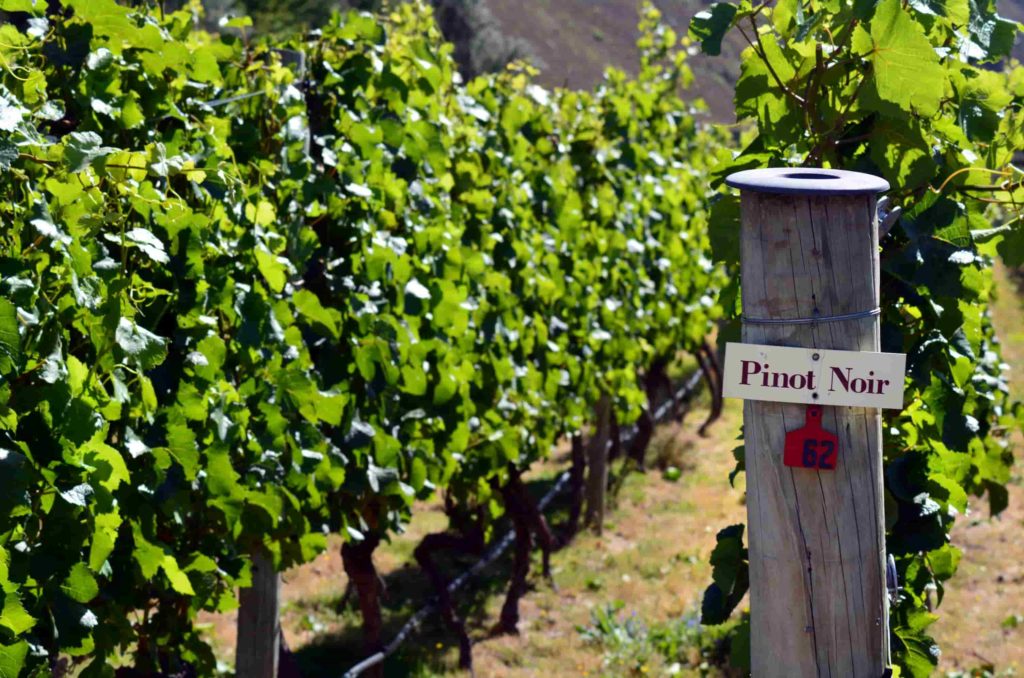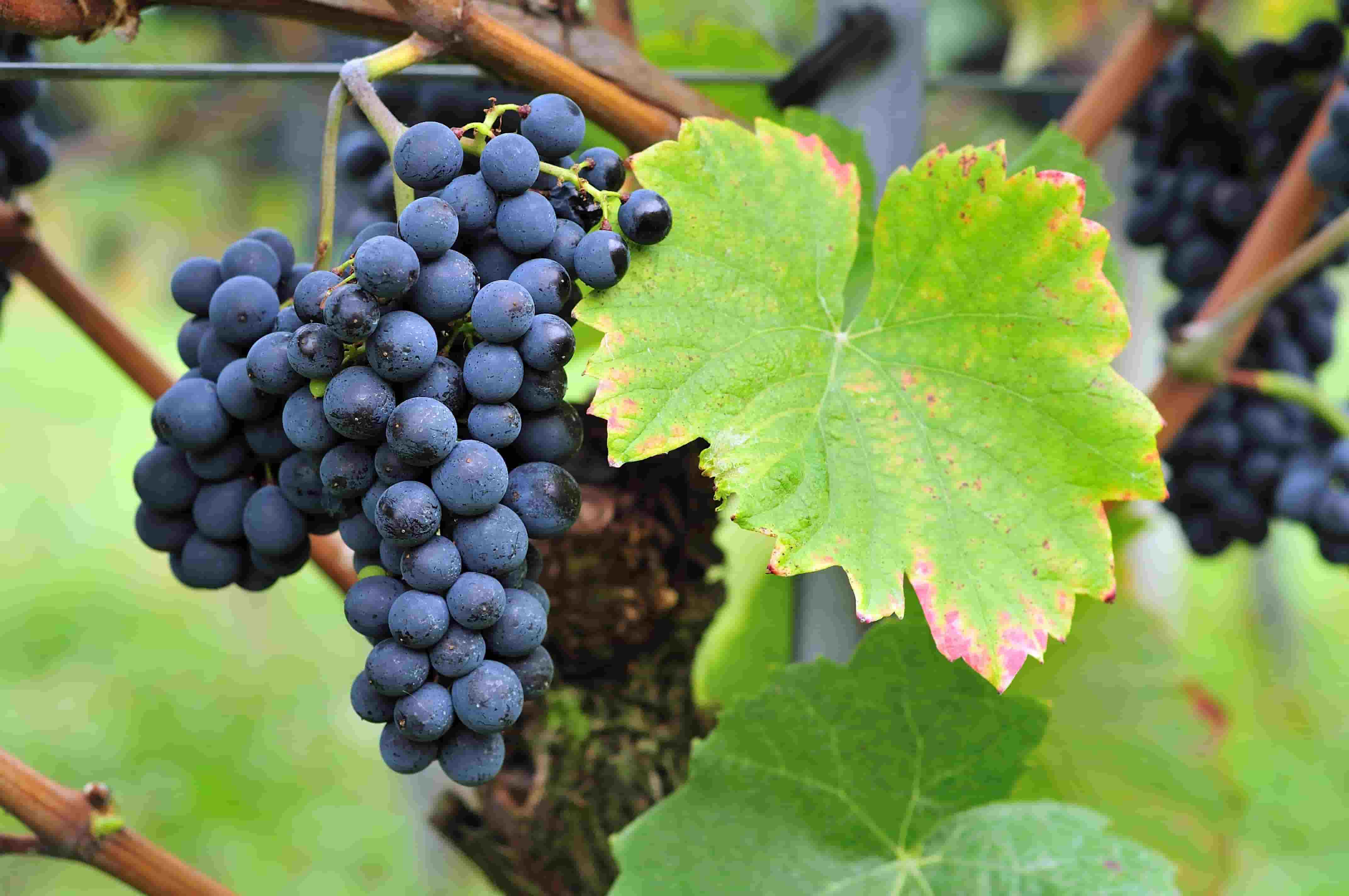
Your red wine guide | Choose the best Pinot Noir

The great red grape of Burgundy can produce utterly thrilling wine: silky, fragrant and gloriously complex. The name may have come from the French word for pinecone (pinot) to describe the shape of the grape’s bunches. Pinot Noir, Pinot Blanc, Pinot Meunier, Pinot Precoce and Pinot Gris (Pinot Grigio) belong to the same close family, but Pinot Noir is the most temperamental. Pinot Noir reflects the nuances of its terroir with razor-sharp precision making it one of the most interesting red wines. However, a caveat of this early-ripening grape is that it is difficult to grow; not every bottle is worth your attention, but a good Pinot Noir is incomparable.
The mercurial grape is highly sensitive to climate and its treatment in the vineyard. Pinot Noir enjoys a relatively cool climate and often grows well in water-moderated climates or protected valleys. The grape reaches an apogee in the vineyards of the Cote d’Or. Nevertheless, New world Pinot Noir from cooler regions can be equally seductive.
Click on a link to jump to that section:
What is Pinot Noir like?
Pinot Noir is characteristically pale for red wine; it has far fewer colouring pigments than Cabernet Sauvignon, has fewer tannins, and is prone to oxidation. The thin skins that make the grape sensitive to its climate are the reason for Pinot Noir’s lighter body. Moreover, making over-extracted or excessively oaky Pinot Noir wine is all too easy.
Pinot Noir can be easily recognised in the glass by its pinkish-red colour. In cooler climates, such as Germany and southern England, Pinot Noir typically offers crunchy red fruit: fresh red cherry, strawberries, raspberries, violets, hibiscus and roses. These bright, juicy styles of Pinot Noir are incredibly popular, not least due to their moderate alcohol, fruit and refreshing acidity. In warmer areas, Pinot Noir gains weight and texture, with flavours of damson, stewed cherry and sweet spices. Maturation reveals leather, stewed black cherry and mushroom.
Pinot Noir can be mouthwateringly acidic, creating a juicy red that pairs well with chicken, pork or salmon. Pinot Noir’s bright acidity helps cut through creamy pasta dishes or mushroom stroganoff. Aged Pinot Noir, on the other hand, can stand up to roast lamb, duck or game. The best Pinot Noir has no competition; however, a bottle of closely related Gamay could be a good alternative.
Pinot Noir by wine region
Europe
Burgundy
Pinot Noir has been cultivated in Burgundy for centuries, producing some of the most expensive wines on earth as well as excellent, more affordable red. Yet there is some disagreement about the grape’s French origin, but Roman records confirm that wine has been made in Burgundy since 200 AD. However, the first recorded mention of Pinot Noir did not occur until the 14th century.
Regardless, Burgundian Pinot Noir sets the standard for others to follow. Its heartland is the Cote d’Or, a long escarpment which runs from just south of Dijon to the village of Santenay. The moderate climate and calcareous soils of this famous slope bring out the best in Pinot Noir. Leading vineyard sites yield wines of unrivalled intensity, structure, and complexity. The flavour of young red Burgundy is most seductive: crushed red fruit flavours and a touch of coffee, ageing into gamey brilliance.
West Germany
In Europe, Burgundy has few opponents. One notable exception is the vineyards of west Germany, particularly Ahr, Baden, Franken and Württemberg. Historically, German Pinot Noir (known locally as Spätburgunder) often lacked body and structure. However, a run of warmer vintages over the past 15 years has transformed its image. Indeed, the best German Pinot Noir has body supported by firm tannins, ripe fruit and crunchy acidity.
Northern Italy
The best Italian Pinot Noir is made in the hills of Alto Adige (Südtirol) on the Austrian border and Oltrepò Pavese in Lombardy. Growers in both regions exploit the advantages of elevation and superior soils to craft fresh and stylish interpretations of Pinot Noir. Top labels, tasted blind, could easily pass for Premier Cru red Burgundy. They offer ripe fruit, good acidity, and great elegance. Moreover, even the best wines are usually very affordable.
New World

New Zealand
For many critics, New Zealand is Burgundy’s leading competitor in the New World. New Zealand Pinot Noir is seductively scented and often very subtle on the palate. On the South Island, Marlborough creates very Burgundian interpretations of the grape, while Martinborough (on the southern tip of the North Island) is renowned for its spicy, fruit-driven Pinots. The best are ripe, juicy, and balanced by beautiful acidity.
However, New Zealand’s most famous source of Pinot Noir is undoubtedly Central Otago; The region’s spectacular landscape is featured heavily in the Lord of the Rings film franchise. Meanwhile, exquisite Pinot Noir is made in the foothills of Otago’s mountains and Felton Road and Kelly Washington set the benchmark. These exceptional wineries, and others, produce very silky and perfumed expressions of the grape, celebrated for their lush textures and intense character.
California
California’s climate is far more variable than its “land of endless sunshine” reputation suggests. Proximity to the Pacific is crucial for growing Pinot Noir as this helps to moderate the temperature of the vineyards, keeping the grapes vibrant and fresh. The Central Coast region, with its cool maritime climate, is perfect for Pinot Noir. Fragrant, fresh and supple Pinot is the region’s trademark. On the North Coast, Carneros, Sonoma Coast and Russian River Valley all produce exceptional wines from the Pinot Noir grape, ranging from Burgundian styles to very ripe, dense and fruit-forward California Pinot Noir. It all depends on the nuances of a particular site and winemaking.
Australia
Australia is not readily associated with elegant and subtle Pinot Noir. Yet some genuinely brilliant wines are now being made in the country’s cooler spots. These include Tasmania, Victoria’s Mornington Peninsula, Yarra Valley, and Adelaide Hills in South Australia. Western Australian Pinot Noir from Margaret River is another key player.
Production and maturation of Pinot Noir
Pinot Noir is a fickle but alluring grape variety. It can test the patience of even the most experienced winemaker. In Burgundy, whole grape bunches (with stems) are added to the fermentation vessel. The stems can add structure and tannin to the wine, although they may distort the wine’s structure in weaker vintages. Therefore, some growers prefer to destem their bunches, leaving the berries as intact as possible. In contrast, California and Oregon Pinot Noir rarely use stemmed whole bunches since there is no need for extra tannins.
Oak maturation is arguably the most crucial stage of Pinot Noir winemaking. The best Pinot Noirs will benefit from maturation in a certain percentage of new wood, adding depth and structure to the final product. However, many argue that 100% new oak dilutes the wine’s unique character. If the wine is not sufficiently built to handle new barrique, it may smother the fruit. Yet judicious maturation in French oak can add a new dimension to Pinot Noir.
With each use, the oak’s ability to impart characteristics onto the wine diminishes. However, some winemakers decide to use this for a more subtle effect on the wine. Lighter Pinot Noir may be more suitable for maturation in old oak; this way, the structure and flavors are not overpowered by the wood. Pinot Noir can age for some time on old oak owing to the wine’s high acidity and still reveal delicate flavours and fruit-forward characteristics.
How to choose a good Pinot Noir
Pinot Noir has all the bases covered. If you desire a luxurious gift for a special occasion, peruse the catalogue of Burgundy Grand Crus. Leading vineyard sites, such as Musigny and La Tache, take Pinot Noir to the next level; with its exquisite bouquet, endless depth and unbelievable complexity, top red Burgundy has no equal in the New World. However, there is also a surfeit of excellent Pinot Noir – including many Burgundy wines – that are not particularly expensive. For a favourable price-to-quality ratio, seek labels from Western Australia, Germany, Italy, and the Côte Chalonnaise; you could even choose a more local English Pinot Noir. As a general rule, warmer climate zones like Napa Valley will offer you richer, rounder wines with more ‘grip’ and ripe fruit.




